The global pandemic has taken a huge toll on our collective mental health. It isn’t just the threat of getting sick — it’s the effects of social distancing, being quarantined and unable to live our normal lives, the financial impact on small businesses and families, the loss of loved ones, and the divisive issues that surfaced, just to name a few.
According to a 2020 study by the Centers for Disease Control and Prevention, out of more than 5,000 adults surveyed in the United States, 40.9% reported “at least one adverse mental or behavioral health condition.” This includes anxiety, depression, post-traumatic stress, and substance abuse, with rates three to four times higher than in 2019. Even more alarming, 10.7% of the respondents reported that they were seriously considering suicide. (1)
Struggling with a chronic condition is difficult in and of itself, and has been made even harder by recent events. Many who have a chronic illness already feel isolated; the pandemic has only amplified that. Ongoing stress has many negative effects on the body, including increasing inflammation. This in turn can exacerbate chronic conditions. (2)
The good news is that there are simple ways to help combat modern stresses of life. Changing your mindset is a great start.
When it comes to your health, it’s easy to think of areas like diet and physical activity. But don’t forget what is equally as important — your mental health! You have probably heard of mindfulness exercises, and may have even tried a few. Improving your mindset and being fully present to enjoy the little moments in life can be a game-changer when it comes to your emotional and mental fortitude.
Four common mindfulness practices can help improve your physical and mental well-being: gratitude, meditation, mindful movement, and positive affirmations. And there are simple exercises you can do every day to incorporate these strategies.
One thing to remember is that these four practices are called “practice” for a reason. Mindfulness strategies don’t operate like an on-off light switch. Perfection isn’t the goal, or even achievable. It’s more about finding moments and opportunities to be fully present, and learning to grow every day. If you’d like to deepen your journey, the Mind, Mind Management & Raja Yoga resource offers practical insights to strengthen mindfulness and inner awareness.
1. Gratitude
According to the Cambridge Dictionary, the word gratitude means “a strong feeling of appreciation to someone or something for what the person has done to help you.” But it’s so much more than that. (3)
According to Robert Emmons, PhD., the world’s leading scientific expert on gratitude, a grateful attitude is essential during tough times. Gratitude, says Emmons, is the root of our positive attitude, giving us health, hope, and power. And when times are tough, these are the essential elements we need to navigate stormy waters. (4)
Science backs up his claim. A three-month study of almost 2,000 participants conducted over nine months has shown a positive correlation between gratitude and life satisfaction. Basically, gratitude increases life satisfaction, resulting in even more gratitude. This positive, continuing cycle can have personal benefits that may include: (5)
- Better mental and physical health
- More pro-social behavior
- High-quality relationships
- More meaningful lives
7 Ways to practice gratitude
Here’s seven simple ways to start a gratitude practice:
- Give the gift of gratitude. Send a loved one a message of how thankful you are for them.
- Post about something you are grateful for on social media. Encourage others to respond in kind.
- Make a meal or favorite treat for someone in need or just because
- Write down five things you were grateful for today
- Send a card to someone in your community to let them know you appreciate them
- Call a family member or friend and listen attentively
- Remember to smile today
2. Meditation
There are many different types of meditation, some of which you may be familiar with such as mindfulness, spiritual, focused, mantra, transcendental, and visualization. (6)
According to Andy Puddicombe, Buddhist monk and founder of the guided meditation app Headspace, “Meditation isn’t about becoming a different person, or even a better person. It’s about training in awareness and getting a healthy sense of perspective. You’re not trying to turn off your thoughts or feelings. You’re learning to observe them without judgement.” (7)
Studies have shown meditation to have a physiological effect on certain areas of the brain. For instance, one study at Yale University found that regular meditation decreased activity in the part of the brain responsible for a “wandering mind.” Similarly, a study at Harvard University found that regular meditation increased the volume of brain cells in the learning and memory centers, while decreasing neuron volume in the parts of the brain responsible for anxiety, fear, and stress. (8)
Following a daily meditation practice may have health benefits such as: (9, 10, 11, 12, 13)
- Anxiety and depression support
- Better sleep
- Blood pressure moderation
- Pain relief
7 Ways to Practice Meditation
Here’s seven simple ways to start a meditation practice:
- Take 10-15 minutes every day to be quiet, at peace, and still
- Set an alarm to take three deep breaths three times a day
- Take time to be alone in nature
- Take 10 minutes first thing in the morning and right before bed to reflect and meditate
- Unplug from the news and social media at least once a day
- Try some guided meditation online or through apps
- Create a playlist of your favourite relaxing songs to listen to next time you feel stressed
3. Mindful Movement
When you think of being mindful, do you immediately think of sitting still for long periods of time in silence? While finding solace in silence has its merits, it’s often difficult to carve out quiet time.
Enter mindful movement. These are exercises such as qui gong, tai chi, and yoga with gentle physical activity that allow simultaneous attention to breathing and mental acuity.
Numerous studies have shown a significant reduction in anxiety and depression for individuals who participate in these types of mindful movement exercises. (14, 15, 16)
7 Ways to Practice Mindful Movement
Here’s seven simple ways to start a mindful movement practice:
- Take a yoga class or learn a few new yoga moves
- Try some tai chi exercises
- Try some qui gong exercises
- Go for a walk
- Take 10 minutes every day for gentle stretching
- Try body relaxation techniques to destress
- Share on social media your favourite mindful movement exercise
4. Positive Affirmations
Remember the old Saturday Night Live skit where Al Franken played Stuart Smalley? His famous affirmation was, “I’m good enough, I’m smart enough, and doggone it, people like me.”
Even though we laughed at those skits, positive affirmations are a legitimate way to motivate yourself and boost your self-esteem by reciting inspiring and uplifting phrases and statements. (17)
Daily affirmations may decrease stress, which has been shown to have health benefits of its own. Less stress can promote better sleep, increase the body’s resistance to sickness, shorten recovery time from illness, and even make weight control easier. (18, 19)
7 Ways to Practice Positive Affirmations
Here’s seven simple ways to start a positive affirmation mindset:
- Repeat a positive affirmation 10 times every day
- Write down three things you appreciate about yourself
- Treat yourself — do something that you love today
- Write down positive affirmations and leave them around your home and/or work as daily positivity reminders
- Read an inspiring book or watch an inspiring video
- Write down all of the negative thoughts you have. Cross them out. Rewrite them with a positive twist.
- Post a positive affirmation on social media to inspire others. Positivity on social media is much needed these days!
Practicing mindfulness with gratitude, meditation, mindful movement, and positive affirmations is a great way to start being fully present in life. Especially if you have a chronic illness, it’s even more important to focus on your mental health during tough times. These mindful practices are often free and simple, plus they are a great way to build your mental fortitude and connect more deeply with yourself and your loved ones.




